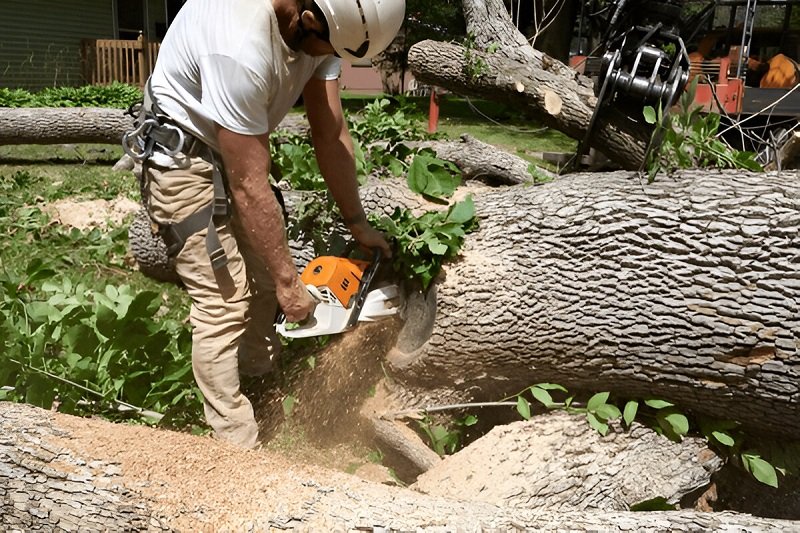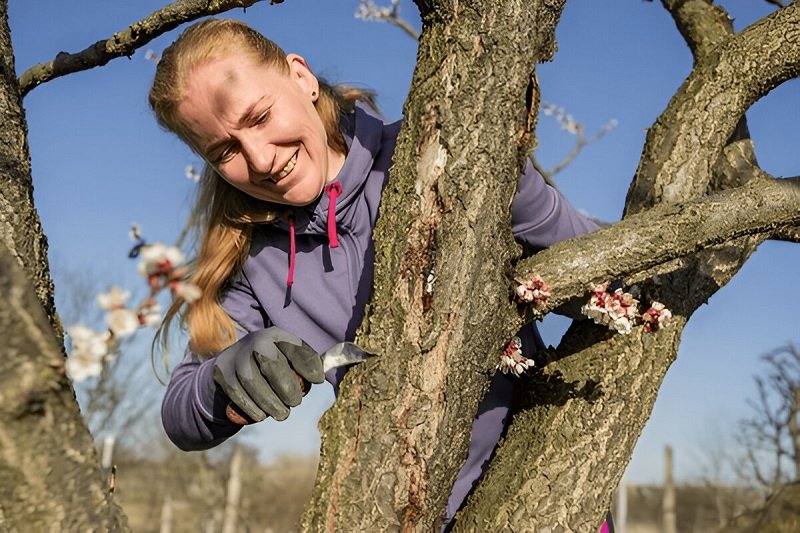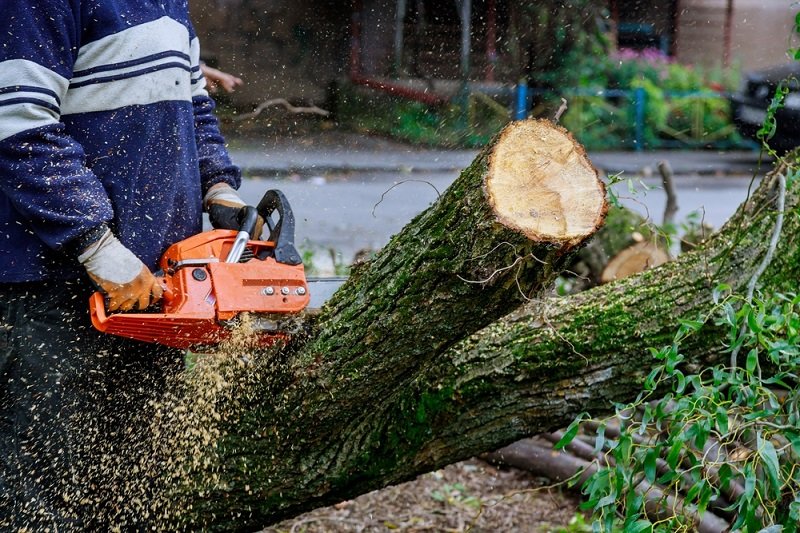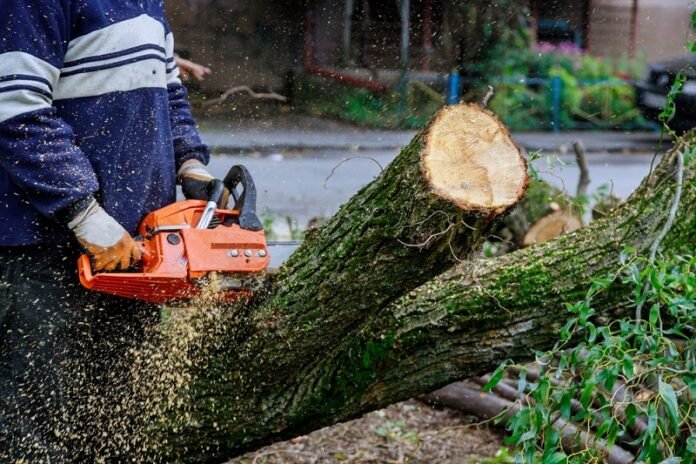Have you ever stood in your backyard wondering if you really need a professional tree worker to deal with that towering gum tree? Or found yourself searching for quick and cheap solutions, only to worry about the safety of your property? Selecting the right tree-cutting contractor can be quite a daunting affair if you are new to the whole process. However, wronging this decision may, in the end, cost you more with a lot of hassles.
In this post, we’ll explore common mistakes people make when hiring tree cutting services. We’ll talk about why tree removal companies need to be licensed in Australia, the importance of proper insurance, and what to include in tree work contracts. Plus, we’ll dig into safety protocols, post-job clean-up, and the role of industry affiliations like the Tree Contractors Association.
By the end, you’ll have clear insights into best practices for tree lopper hire. The course will cover important arborist qualifications and related license requirements, as well as some hidden risks to look for. It doesn’t matter if you’re heading for a light tree prune or an outright tree removal; the idea is to put you in the hands of a competent and trustworthy arborist. Here we go!
Table of Contents
Understanding The Importance Of Professional Tree Works
Most people don’t realise that professional tree works are about more than just chopping down branches. As far as tree management and removal is concerned, the experts here handle this scientific field with the knowledge of tree growth, local laws, and the tools of the trade. A layperson would only mess this up and cause ripple effects onto the environment, injure someone, or destroy properties.
Why Is It Needed to Obtain Tree Removal Licenses in Australia?
We have seen most Australian states that local councils require tree removal contractors to obtain a license to protect the community along with flora and fauna. This is to ensure that untrained people are eliminated, as they may lack knowledge about safety practices. If your arborist lacks the credential and licensing, you would be dealing with an individual who will probably not comply with your area standards.
The Role Of Qualified Tree Workers And Arborists
Usually trained in specialist training surrounding pruning, planting, and removal of trees, qualified tree workers and arborists must stay up to date on industry practices and sometimes even hold nationally recognised certificates. Their depths of knowledge include everything from plant biology to the safe use of machinery.
Not Checking Credentials Or Arborist Licence Requirements

One of the biggest blunders is assuming anyone holding a chainsaw can lop off branches without trouble. In reality, tree lopper hire demands a deeper investigation of credentials. Failing to verify licences and qualifications can not only leave you with a subpar job but also put your home and family at risk.
Arborist Qualifications And How To Become A Tree Lopper
The qualifications of an arborist in Australia hinge mostly on a nationally recognised certificate or a Diploma in Arboriculture. Most aspiring arborists start their career as apprentices or work through TAFE to gain practical experience. If you are willing to know how to be a tree lopper, you must know some practical skills and, additionally, some theoretical knowledge concerning tree biology and safe climbing techniques.
Understanding The Arborist Licence NSW
New South Wales has its own arborist licence provisions, which can be stricter than in other regions. The Arborist Licence NSW framework often requires thorough testing and proof of competency. It’s essential you ask potential contractors if they meet these local requirements.
Overlooking Proper Insurance And Certification
Insurance might seem like a formality—until an accident occurs. When you’re dealing with towering gums or tall pines, unexpected events can happen, and without adequate insurance, any injuries or damage could cost you thousands. Similarly, ignoring tree trimming certification can lead to substandard results that harm the tree.
Why Is Tree Climbing Insurance Essential?
Tree climbing insurance is specialised cover that safeguards contractors when they scale tall trunks and branches. Accidents at height can be serious, and this policy helps cover medical and liability expenses. Anyone who advertises as a tree climber but doesn’t have this insurance could leave you vulnerable if a claim arises.
Tree Trimming Certification: What You Need To Know
Tree trimming certification goes beyond being a badge of honour. It represents competency in techniques that protect both the tree and the environment. Certified trimmers stay updated on methods for shaping trees, removing dead wood, and reducing hazards without ruining the tree’s natural form.
Skipping Comprehensive Tree Work Contracts

Another misstep is starting a project without a proper contract. Some people think a handshake and a verbal agreement are all that is necessary; however, this often leads to misunderstandings. A good contract states everything about the project: its scope, costs, timelines, and any other essential details. This prevents confusion later on for you and for the contractor.
The Role Of A Tree Work Contractor
Treework contractors are more or less the major stakeholder in the matters of quoting, project executions, and field completions. The tree work contractor will most probably be in charge of the presence of all required machinery at the site, communicating if any health and safety rules should apply, and making sure the agreed jobs are done the right way. They should be comfortable talking about project variations if something unpredictable emerges.
Key Points To Include In Professional Tree Works Agreements
When creating or reviewing a tree work contract, make sure it specifies the scope of work. Will the cowed branches be trimmed, or do you need heavier pruning? Are you removing just a single stump or an entire row of trees? Clarity on these basics helps prevent arguments later.
Choosing The Cheapest Option For Tree Lopper Hire
We all love a good bargain, but going for the cheapest quote can backfire when it comes to tree lopper hire. A significantly low price might mean untrained workers, lack of insurance, or outdated gear. Sure, you might save a few dollars now, but you could end up paying far more if an accident occurs or if the work isn’t done properly.
Why Cost Shouldn’t Be The Only Factor
When you’re trying to budget for tree services, it’s tempting to pick the cheapest option on the list. However, that lower figure may coincidentally reflect lower qualifications. Those who set their prices too low might not spend on hiring an arborist who is properly trained. Or they might skip insurance, leaving you exposed.
Potential Risks Of Hiring Unqualified Tree Cutting Contractors
Unqualified outfits might not follow critical safety protocols, putting both workers and neighbours in danger. Injuries, property damage, or legal battles can creep up if something goes wrong on site. In many cases, they might rush through jobs and leave behind unsightly stumps or debris.
Failing To Verify Industry Affiliations
Industry affiliations are more than just membership badges. They usually indicate that a contractor follows ethical practices, meets high standards, and stays updated with industry trends. For instance, the Tree Contractors Association sets specific codes of conduct and promotes ongoing training among members.
The Importance Of The Tree Contractors Association
The Tree Contractors Association is known for supporting its members through workshops, certification programmes, and practical guidelines. Membership can show that your chosen tree professional maintains strong work ethics. These standards might include proper pruning methods, correct equipment usage, and transparent communication with clients.
What Makes A Tree Professional Stand Out?
Use positivity by presenting tree hire professionals with credentials other than just formal membership of associations. Good communication has punctuality that reflects their commitment to exemplary service. Customer reviews or testimonials have a lot to say about a given company.
Ignoring Safety And Risk Assessment

Neglecting safety measures may cause great havoc in tree cutting projects. You would expose your property to danger if you didn’t consider whether your contractor has a climbing license and the safety equipment necessary. This is of particular importance in instances where heavy branches hang above power lines or neighboring fences.
Why You Should Obtain A Tree Climbing License Matters
This attains a license in tree climbing for safety standards to be evaluated and qualified by the professionals about safe climbing techniques, correct harness use, and space awareness at heights. Without training, such a climber would not be equipped with the abilities needed for convinvingly getting into difficult positions or, having gotten themselves in trouble, to call for real help; all these can result in accidents or damages to property.
Typical Safety Standards In The Arborist’s Work
Responsible contractors will not ordinarily start a job without having donned high-visibility clothing, helmet, hearing protection, and safety-harness gear. They would inspect their equipment very often to ensure that it is in perfect condition. Apart from that, they would set up exclusion zones around jobsites, thus avoiding risks from falling branches.
Not Considering Post-Job Cleanup And Maintenance
Many homeowners forget to ask about what happens once the tree cutting is done. Will the contractor remove leftover branches, sawdust, and wood chips? If not, you may end up hunting for an additional service to handle the mess. Likewise, ignoring long-term maintenance can diminish a tree’s health.
The Value Of Ongoing Tree Care Services
An arborist can benefit your trees for many years ahead when intermittently consulted to check on them. Fungi, insects, and nutrients-all sometimes contribute to problems of trees. By early detection, it can be remedied in time so that assumptions may not entertain catastrophic destruction of the tree, much less expensive damage to your resources.
Hire An Arborist For Periodic Inspections
Just like visiting your GP for your routine annual health screening, hiring a trusted tree expert for periodic check-ups is needed. They assess everything most of the time, write a recommendation on treatment, and most importantly, deal with all structural issues early before they become problems. It is definitely cheaper than facing emergencies.
Conclusion
Check all licenses up to the specific council licenses from Arborist License NSW. Also, check that the insurance is valid, which should include climbing insurance. Check the ratings, seek references, and verify the affiliations with the industry that show how committed they are to their profession. Last but not least, put everything in writing such as costs, scope, and cleanup detail, to save you from nasty surprises later. Make the wise decision now so that valuable time and money can be saved in the future, encouraging smoothness in tree-cutting projects.








